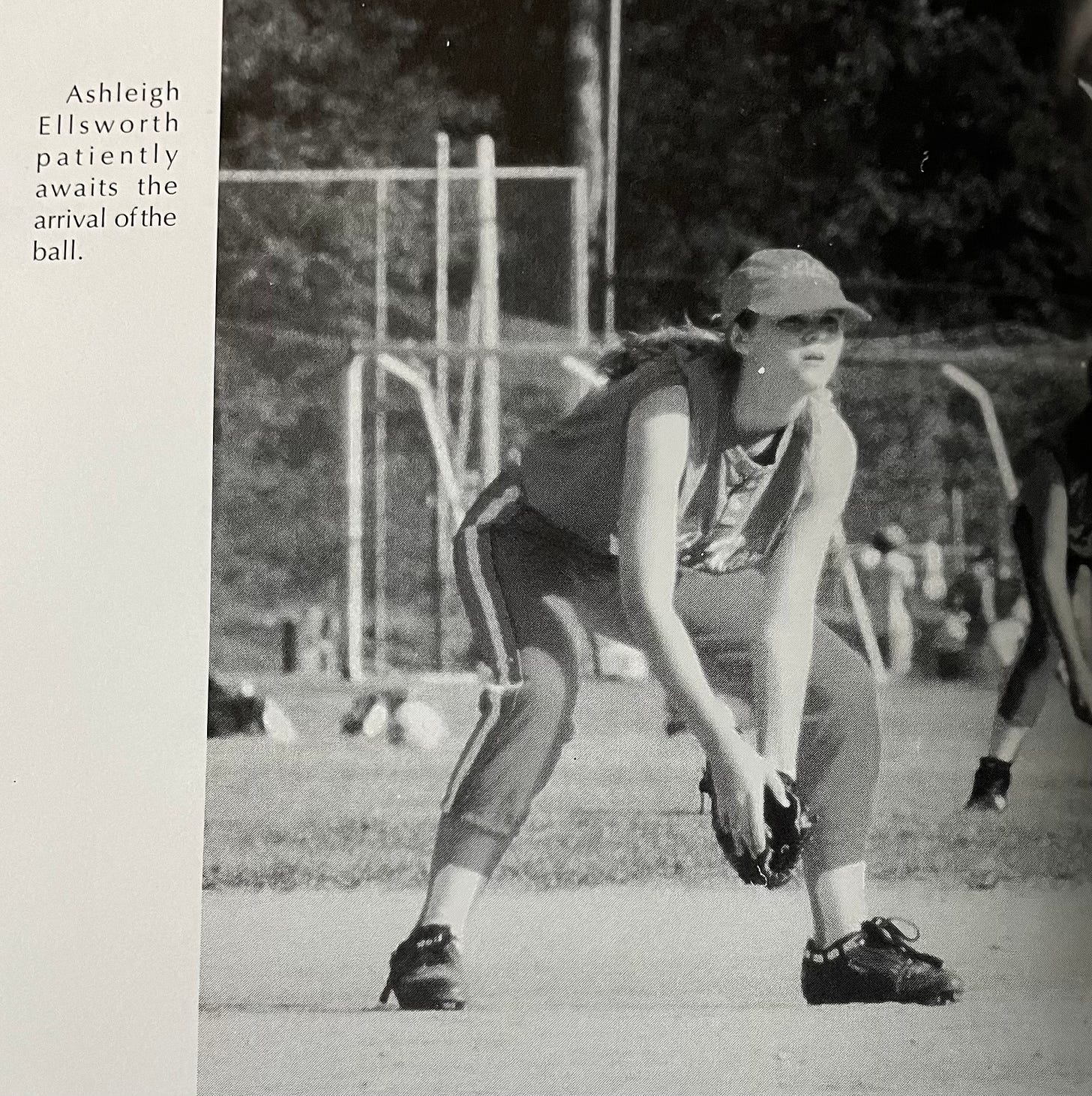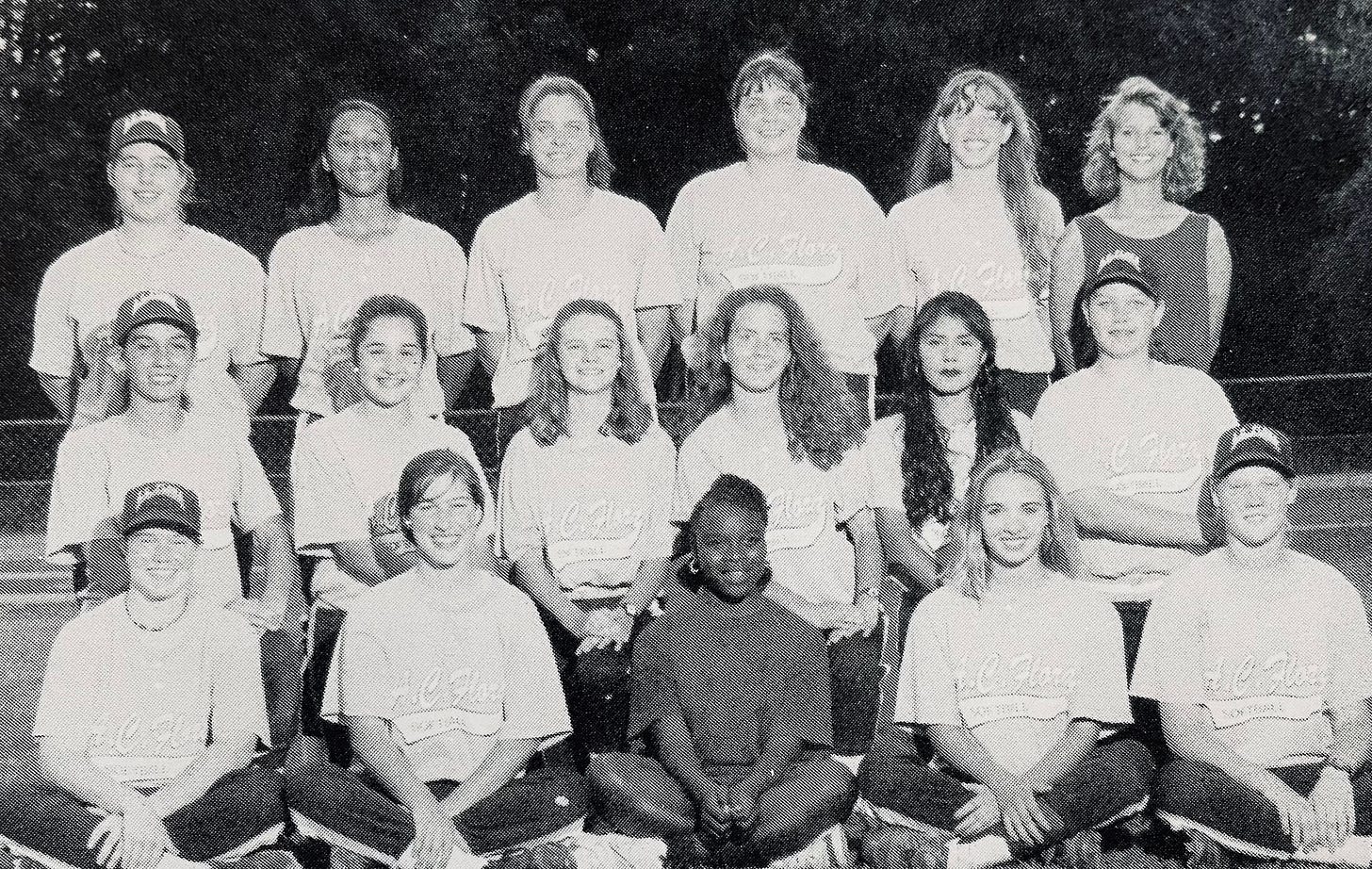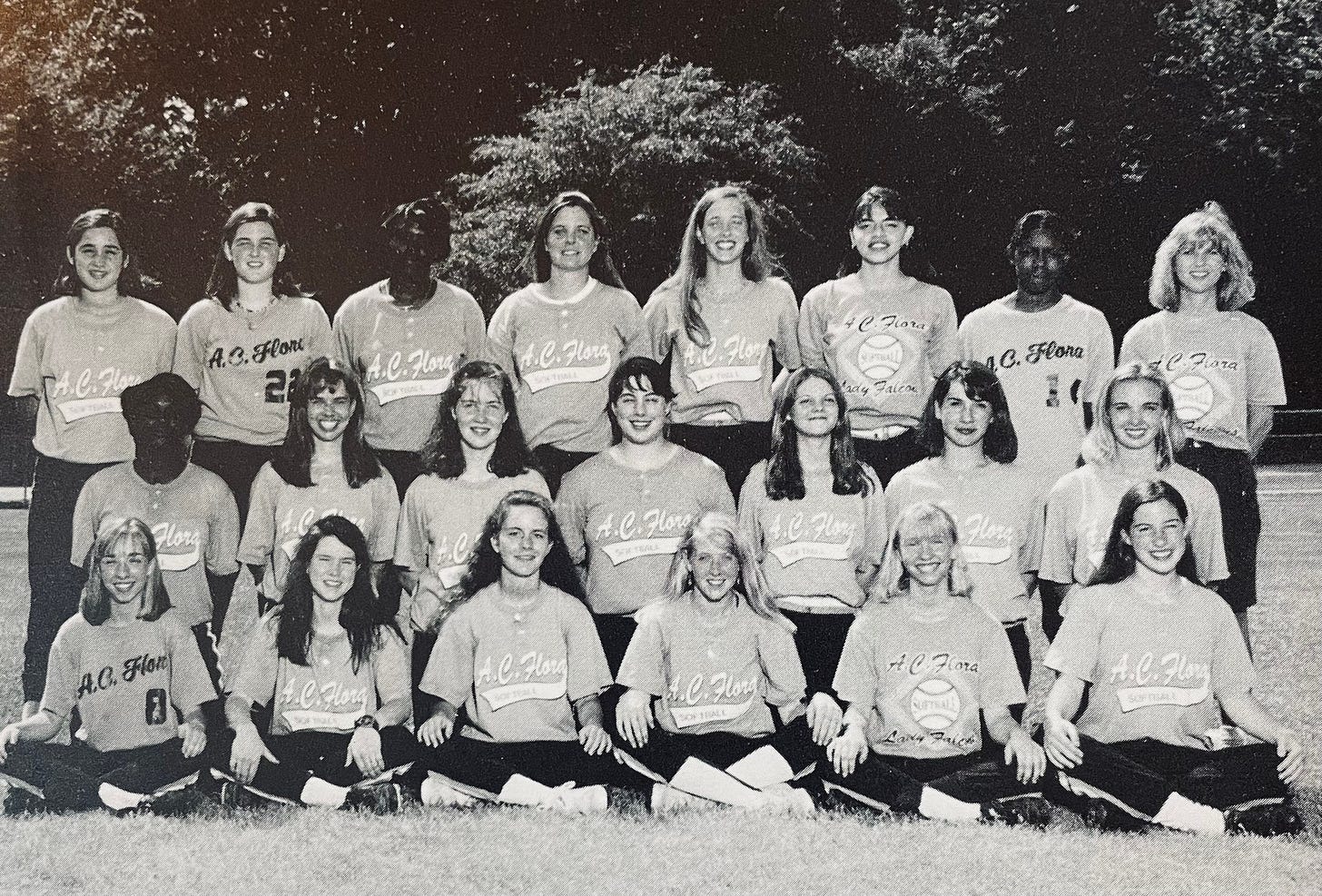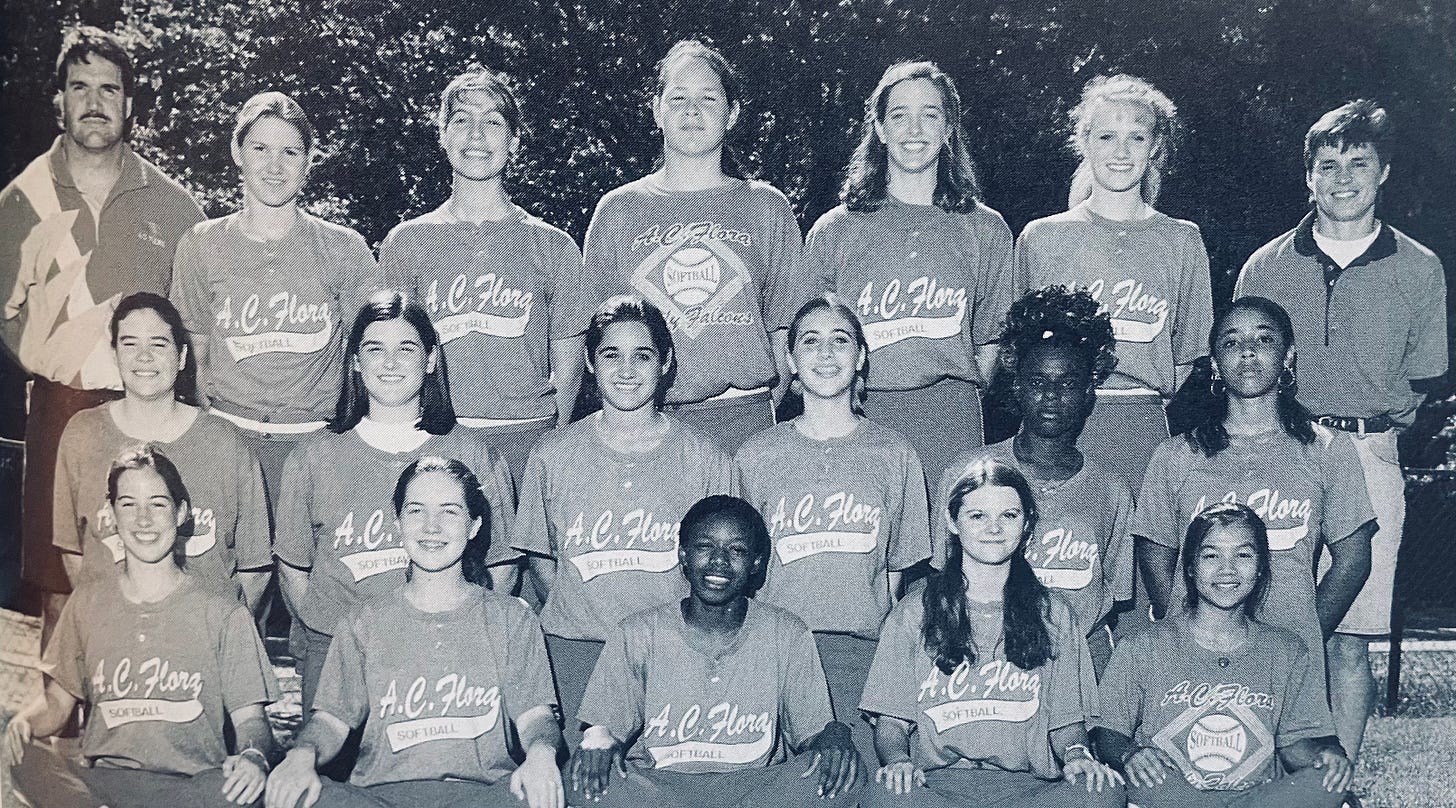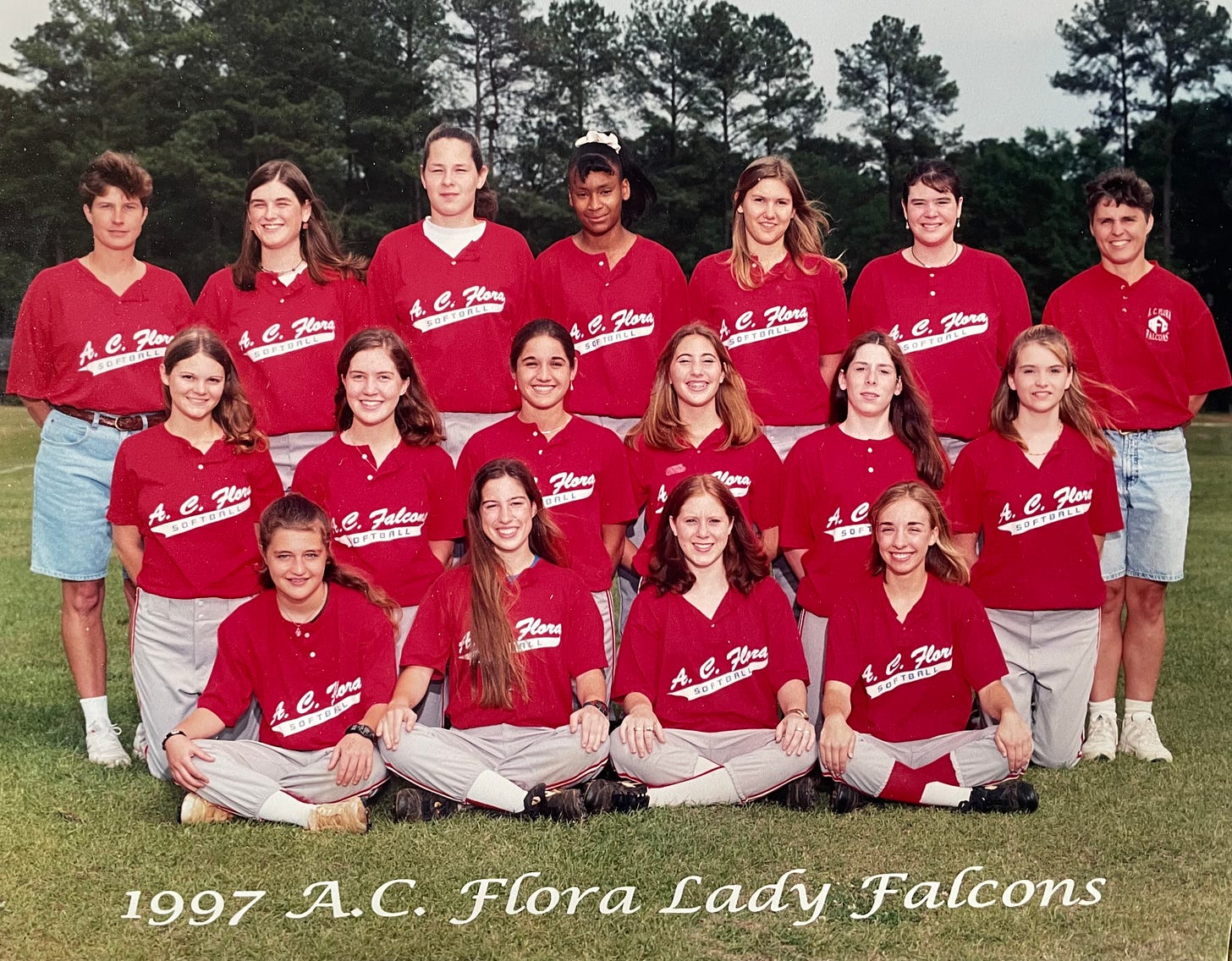ACF Softball
A.C. Flora High School's Lady Falcons, 1994-1997.
If you’d rather listen to this essay in a browser or as a podcast, click the audio voiceover (“listen to post”) above. Read this if you need instructions on how to listen to episodes on your podcast app.
If you’re reading this in your inbox, you can find a shareable, web-friendly version at ashleighellskells.substack.com, where all my other essays and podcasts live. You can request to follow me on Facebook here and Instagram here, and I’m happy to hear from you at aellsworthkeller@gmail.com.
I wasn’t a particularly athletic kid. I’d never played team sports growing up, other than kickball in P.E. (for which I was always picked last; small girls with short legs aren’t usually considered the biggest team assets). I did attend one tennis camp in the 4th grade, where the best part was getting a new, sparkly teal racket (the wooden one that my parents sent me with was quickly abandoned) and one of the coolest t-shirts I’d ever received, with the name of my team on it (ACES scribbled in bright neon orange and blue puff paint–so hot in 1988)!
Granted, back in the 1980s and early nineties, there were not a lot of opportunities for girls in community sports. I spent years watching my little brother play soccer and baseball, and it would be the rare day to see even a single girl on any of those teams. It wasn’t that there were separate sports for the girls; there were simply no options available to us.
I didn’t have a competitive spirit and I didn’t much like running, so I didn’t even consider that I was missing out. (For reference, I knew that I wasn’t allowed to be a Boy Scout, but that was something I wistfully did want to do. But that’s another story). At ten years old, it never occurred to me that I (and every other girl) was being discriminated against.
And thank God that’s changed. Now, if she wanted to, my own daughter can play any sport she chooses, starting at any age, and keep doing it for as long as she’s good at it and as long as she wants to. (She did a t-ball camp when she was five. I’m not sure it’s for her). But she can now look to professional female players as role models in a much larger variety of fields than I ever had. She loves cheering on women’s soccer and we hope to go to our first match this summer.
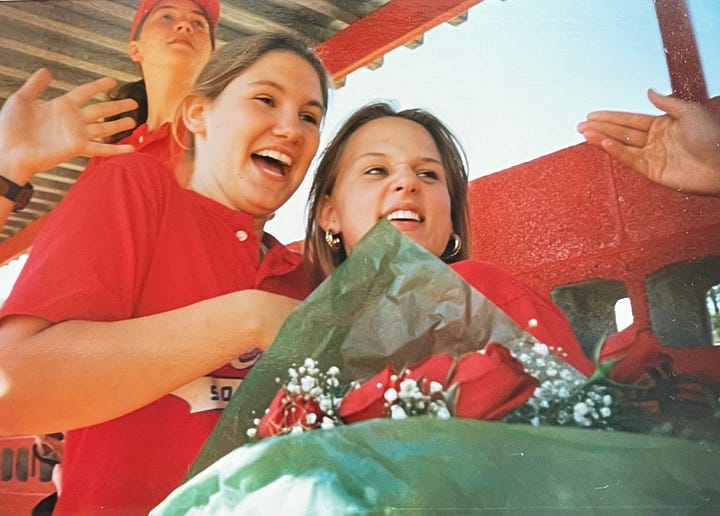
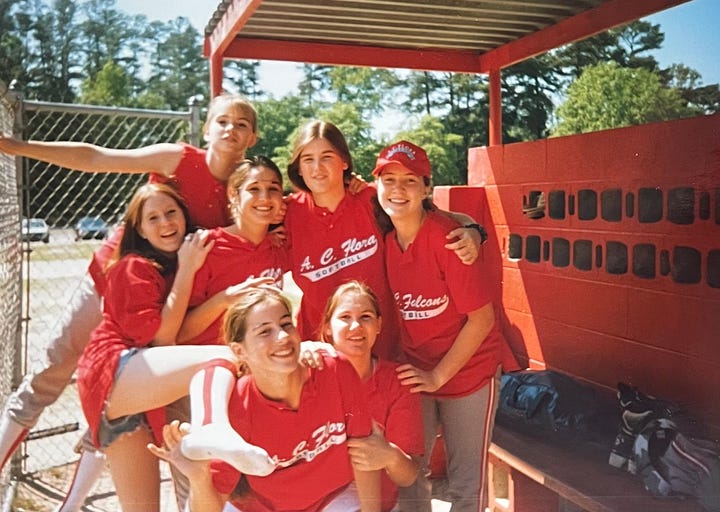
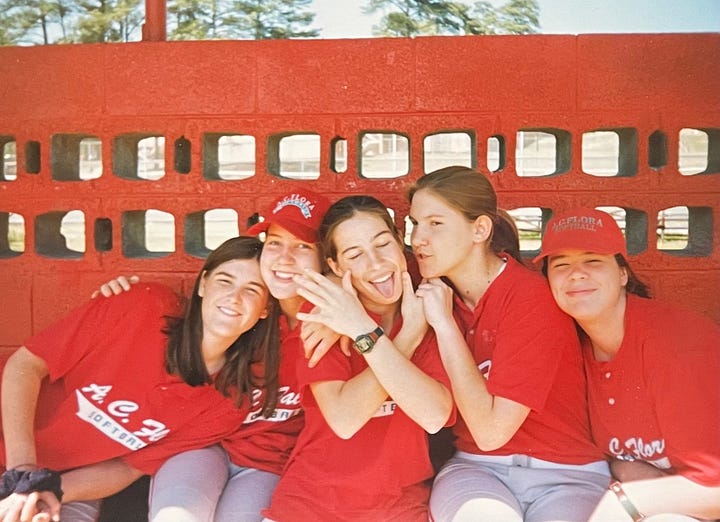
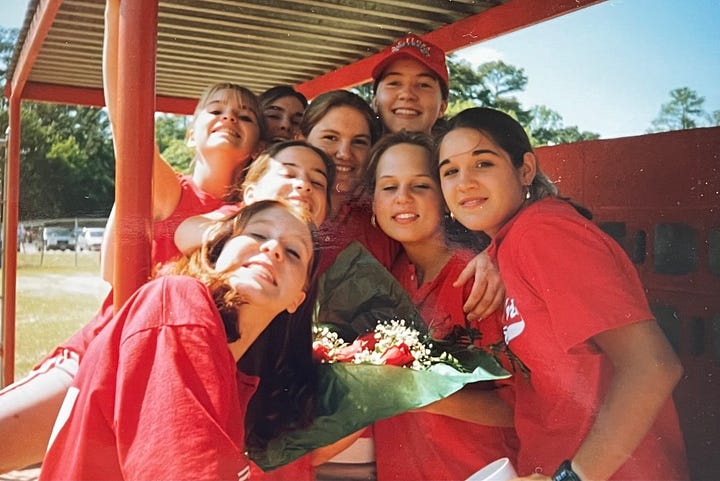
But back to Spring 1994, my freshman year of high school, and seeing the notice that varsity softball tryouts would be happening soon. Not being that into sports, it was a little bit of a surprising thing that I wanted to give it a go. So I signed up.
I don’t remember all the specifics of that tryout week. I do remember that it was tough, really tough. I had never really thrown a softball (my hands were so small!), swung a bat, or worn a glove. And there was so much running.
My peer group saw the competition for spots on the team and got a little freaked out. Being just freshmen, it seemed unlikely that we would even make the team. Plus, the coach, this little ball of fire named DeDe Goodman (she was the Special Education teacher), was intense.
So I went home and told my parents that a few of us were going to drop out of tryouts. “We’re probably not going to make the team anyway,” I said. “It’s too hard and I’m not very good.”
They had a different view. “You signed up to give it a try,” my dad said. “You need to stick it out and give it your best. Even if you don’t make the team, you have to fulfill your end of the bargain.”
So I kept at it. Some of us left, but some of us stayed. And at the end of the week, in what felt like despite all odds, I made the team.
“It’s because you persisted, Ashleigh,” Coach Goodman told me.
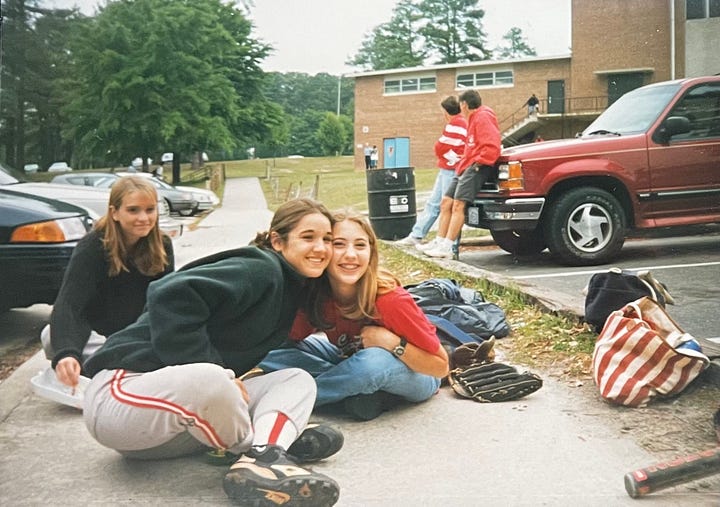

The next four years were a crash course in Varsity Softball 101. We were not a group of incredibly athletic girls–indeed, it was only my sophomore year when we had eight seniors on the team that we were actually any good. But we had so much fun!
Coach Goodman was also the cheerleading coach and recruited some of her athletes to sign up for softball, which is how we became a non-stereotypical group of softball players, plenty of tiny girls with a lot of pep (our cheers were killer) and a TON of determination. When we’d play some of the more rural teams, like Lugoff-Elgin or the dreaded Swansea–those girls were so good–we knew that our chances of winning were low, but we always went out there and gave it our best. And we were pretty good!
During that time, I learned how to run fast, field balls, do the books, intimidate the other team with a variety of songs and cheers (very important), and cheer my own teammates on. I learned to love running and I honed my laser-sharp focus during those many minutes of waiting for something to happen.
My favorite position was third base but I often got put at shortstop and occasionally in the outfield. I always felt like I was masking the fact that I was really just an average player, but I didn’t sulk around or get annoyed by where I was put in the field in any given game.
I never got all that good at hitting (we were fast pitch, thank you very much, and our pitchers, Katharine and Adrienne and Lauren and Carlie, had to work the hardest of all), and I was always a little bit freaked out by fly balls. But we all had our own gifts. We had the powerhouse hitters and the ones who scrambled around the bases like flashes of lightning. One of us was a gifted artist who painted the lovely team sign that hung on our sadsack* little field for years after I graduated.
We didn’t have to achieve everything individually. That’s what the team is for.
Coach Goodman led us with grit and spirit for those first two years. Junior year was under the leadership of the football coach, Coach Motte, a lovable but intimidating teddy bear. And senior year was the dream team of Coach Moore (our championship-winning girls’ basketball coach) and Coach Childs, who is now the principal of A.C. Flora High School.
In the four years I was on the team, players would come and go, but there were a few of us who stuck it out the whole time. (Props to Lauren also, who started at the same time I did, but as a seventh grader). My senior year, I was crowned Co-Captain, alongside my best friend Anna. We had started from the same place: no experience, but with baseball-playing younger brothers and coach dads. Anna and I were never the best on any team in any year, but we were two of the hardest workers on the team. We had persisted, and that's what mattered.
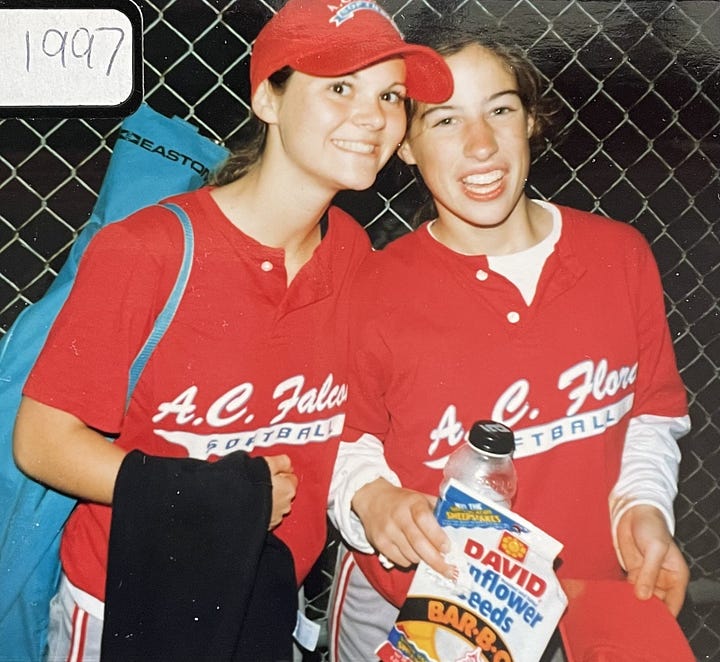
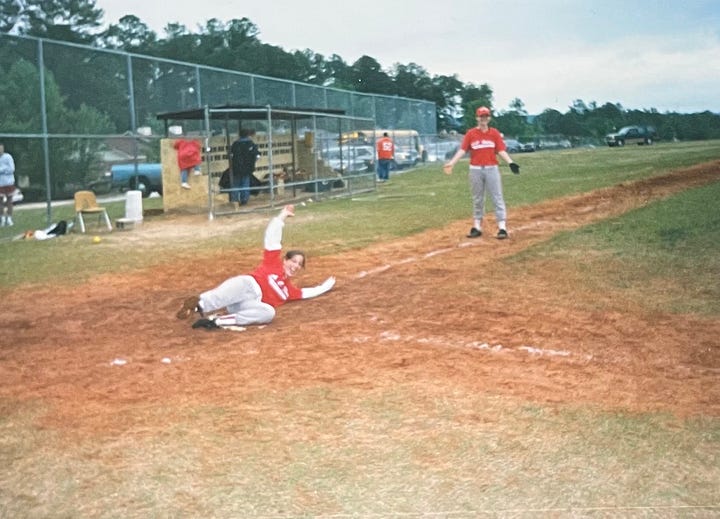

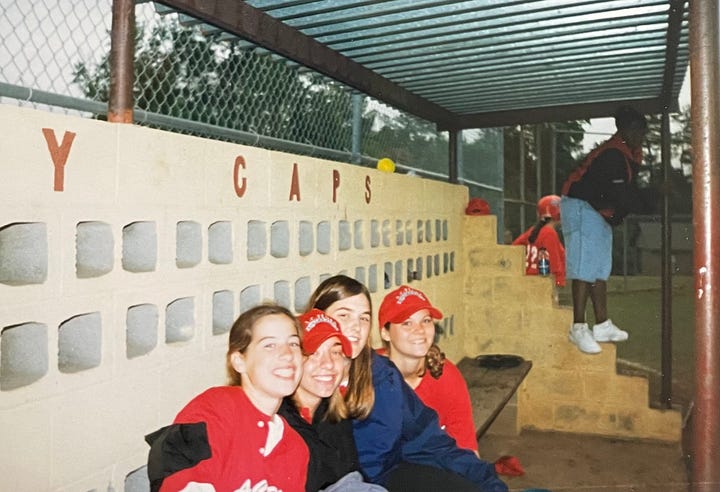
That lesson from my dad—that you keep going until you’ve finished what you started—has been one of the best and most useful life lessons I’ve carried with me ever since that tryout week.
My softball days ended in Spring 1997, at the conclusion of my senior year. I’ve missed it ever since. For years after, I’d have dreams of catching and throwing balls, that nervous excitement of going up to bat, the rhythm of the bus taking us to away games and the chatter and gossip from my teammates up and down the aisles.
My glove is long gone, but I still have that bat bag. Inside it are my bat and a few balls, waiting for when the time is right, waiting until I can play on a team again.
*The girls’ softball field —a dusty, rustic diamond, not terribly far removed from a patch of red dirt, though better than some of our other sister schools’ in the district—was a far cry from the boys baseball field, which had newer dugouts, nice equipment, and sponsor banners on the fence. Just another way that girls’ sports in the mid-nineties were not viewed as important as boys’.
Reflection Questions:
Have you ever been a part of something that felt as routine as the air you breathe, only to have it eventually come to an end? How did that feel?
Did you play a sport in high school? What are the clearest memories from that time in your life?
Who helped you along the journey of playing sports (a coach, a teammate, a parent)? What lessons did they teach you?
A.C. Flora High School is located in present-day Richland County, South Carolina, on the land of the Tsalaguwetiyi (Cherokee, East) and Congaree nations.
Other than the professional team photos and yearbook photos, all photos are by me (or my teammates).



